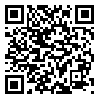1. Alam MA, Kauter K, Brown L. Naringin improves diet-induced cardiovascular dysfunction and obesity in high carbohydrate, high fat diet-fed rats. Nutrients 2013; 5: 637-50. [
DOI:10.3390/nu5030637]
2. Altaş M, Var A, Köse C, Özbilgin K, Arı Z. Endothelial dysfunction in high fructose containing diet fed rats: Increased nitric oxide and decreased endothelin-1 levels in liver tissue. Dicle Medical Journal/Dicle Tip Dergisi 2010; 37.
3. Binayi F, Moslemi M, Khodagholi F, Hedayati M, Zardooz H. Long-term high-fat diet disrupts lipid metabolism and causes inflammation in adult male rats: possible intervention of endoplasmic reticulum stress. Arch Physiol Biochem 2023; 129: 204-12. [
DOI:10.1080/13813455.2020.1808997]
4. Chikezie C M, Ojiako O A, Emejulu A A, Chikezie P C. Atherogenicity of diabetic rats administered single and combinatorial herbal extracts. Bulletin of Faculty of Pharmacy, Cairo University 2018; 56: 169-174. [
DOI:10.1016/j.bfopcu.2018.10.001]
5. Choi Y, Lee EG, Jeong JH, Yoo WH. 4-Phenylbutyric acid, a potent endoplasmic reticulum stress inhibitor, attenuates the severity of collagen-induced arthritis in mice via inhibition of proliferation and inflammatory responses of synovial fibroblasts. Kaohsiung J Med Sci 2021; 37: 604-15. [
DOI:10.1002/kjm2.12376]
6. Cieślak M, Wojtczak A, Cieślak M. Role of pro-inflammatory cytokines of pancreatic islets and prospects of elaboration of new methods for the diabetes treatment. Acta Biochim Pol 2015; 62: 15-21. [
DOI:10.18388/abp.2014_853]
7. de Pablo S, Rodríguez-Comas J, Díaz-Catalán D, Alcarraz-Vizán G, Castaño C, Moreno-Vedia J, et al. 4-Phenylbutyrate (PBA) treatment reduces hyperglycemia and islet amyloid in a mouse model of type 2 diabetes and obesity. Sci Rep 2021; 11: 11878. [
DOI:10.1038/s41598-021-91311-2]
8. Duan Y, Zeng L, Zheng C, Song B, Li F, Kong X, et al. Inflammatory links between high-fat diets and diseases. Front Immunol 2018; 9: 2649. [
DOI:10.3389/fimmu.2018.02649]
9. Feillet-Coudray C, Fouret G, Vigor C, Bonafos B, Jover B, Blachnio-Zabielska A, et al. Long-term measures of dyslipidemia, inflammation, and oxidative stress in rats fed a high-fat/high-fructose diet. Lipids 2019; 54: 81-97. [
DOI:10.1002/lipd.12128]
10. Guo Q, Xu L, Li H, Sun H, Wu S, Zhou B. 4-PBA reverses autophagic dysfunction and improves insulin sensitivity in adipose tissue of obese mice via Akt/mTOR signaling. Biochem Biophys Res Commun 2017; 484: 529-35. [
DOI:10.1016/j.bbrc.2017.01.106]
11. Gupta M, Kaur A, Singh TG, Bedi O. Pathobiological and molecular connections involved in the high fructose and high-fat diet-induced diabetes associated nonalcoholic fatty liver disease. Inflamm Res 2020; 69: 851-67. [
DOI:10.1007/s00011-020-01373-7]
12. Huang HY, Korivi M, Tsai CH, Yang JH, Tsai YC. Supplementation of Lactobacillus Plantarum K68 and fruit-vegetable ferment along with a high fat-fructose diet attenuates metabolic syndrome in rats with insulin resistance. Evid Based Complement Alternat Med 2013; 2013 :943020. [
DOI:10.1155/2013/943020]
13. Kruger N J. The Bradford method for protein quantitation. The protein protocols handbook 2009: 17-24. [
DOI:10.1007/978-1-59745-198-7_4]
14. Li J, Chi Y, Wang C, Wu J, Yang H, Zhang D, et al. Pancreatic-derived factor promotes lipogenesis in the mouse liver: role of the Forkhead box 1 signaling pathway. Hepatology 2011; 53: 1906-16. [
DOI:10.1002/hep.24295]
15. Mamikutty N, Thent ZC, Sapri SR, Sahruddin NN, Mohd Yusof MR, Haji Suhaimi F. The establishment of metabolic syndrome model by induction of fructose drinking water in male Wistar rats. Biomed Res Int 2014; 2014:263897. [
DOI:10.1155/2014/263897]
16. Nissar AU, Sharma L, Mudasir MA, Nazir LA, Umar SA, Sharma PR, et al. Chemical chaperone 4-phenyl butyric acid (4-PBA) reduces hepatocellular lipid accumulation and lipotoxicity through the induction of autophagy [S]. J Lipid Res 2017; 58: 1855-68. [
DOI:10.1194/jlr.M077537]
17. Robert-Cooperman CE, Wilson CG, Burkhardt BR. PANDER KO mice on a high-fat diet are glucose intolerant yet resistant to fasting hyperglycemia and hyperinsulinemia. FEBS Lett 2011; 585: 1345-9. [
DOI:10.1016/j.febslet.2011.04.005]
18. Tan R, Dong H, Chen Z, Jin M, Yin J, Li H, et al. Intestinal microbiota mediates high-fructose and high-fat diets to induce chronic intestinal inflammation. Front Cell Infect Microbiol 2021; 11: 654074. [
DOI:10.3389/fcimb.2021.654074]
19. Wang C, Burkhardt BR, Guan Y, Yang J. Role of a pancreatic-derived factor in type 2 diabetes: evidence from pancreatic β cells and liver. Nutr Rev 2012; 70: 100-6. [
DOI:10.1111/j.1753-4887.2011.00457.x]
20. Wang O, Cai K, Pang S, Wang T, Qi D, Zhu Q, et al. Mechanisms of glucose-induced expression of a pancreatic-derived factor in pancreatic β-cells. Endocrinology 2008; 149: 672-80. [
DOI:10.1210/en.2007-0106]
21. Wang T, Yan H, Lu Y, Li X, Wang X, Shan Y, et al. Anti-obesity effect of Lactobacillus rhamnosus LS-8 and Lactobacillus custom MN047 on high-fat and high-fructose diet mice base on inflammatory response alleviation and gut microbiota regulation. Eur J Nutr 2020; 59: 2709-28. [
DOI:10.1007/s00394-019-02117-y]
22. Wang X, Zhang DM, Gu TT, Ding XQ, Fan CY, Zhu Q, et al. Morin reduces hepatic inflammation-associated lipid accumulation in high fructose-fed rats via inhibiting sphingosine kinase 1/sphingosine 1-phosphate signaling pathway. Biochem Pharmacol 2013; 86: 1791-804. [
DOI:10.1016/j.bcp.2013.10.005]
23. Wilson CG, Robert-Cooperman CE, Burkhardt BR. PANcreatic-DERived factor: novel hormone PANDERing to glucose regulation. FEBS Lett 2011; 585: 2137-43. [
DOI:10.1016/j.febslet.2011.05.059]
24. Zeng M, Sang W, Chen S, Chen R, Zhang H, Xue F, et al. 4-PBA inhibits LPS-induced inflammation through regulating ER stress and autophagy in acute lung injury models. Toxicol Lett 2017; 271: 26-37. [
DOI:10.1016/j.toxlet.2017.02.023]
25. Zhang DM, Jiao RQ, Kong LD. High dietary fructose: direct or indirect dangerous factors disturbing tissue and organ functions. Nutrients 2017; 9: 335. [
DOI:10.3390/nu9040335]










